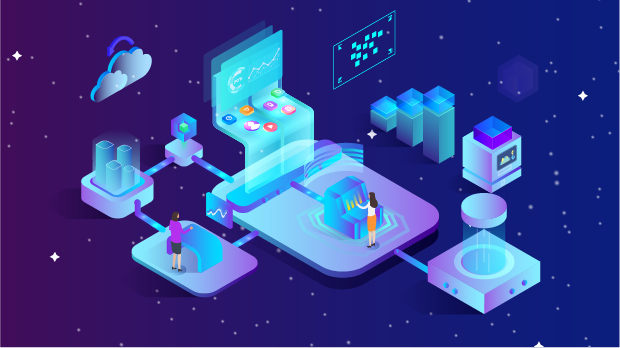In wireless networks, the bandwidth utilization of proxy sites online can significantly impact the overall network performance and user experience. The use of proxy sites involves routing data through intermediary servers, which can influence how efficiently data is transmitted over wireless connections. This article delves into the complexities of bandwidth utilization with proxy sites online, examining factors that affect this performance, potential benefits, and challenges for users and network administrators. Understanding Proxy Sites in Wireless NetworksProxy sites are intermediaries that facilitate communication between a user's device and the internet. When accessing websites through proxy servers, the user's request is sent to the proxy, which then forwards it to the destination server. The response is similarly routed through the proxy before reaching the user. This setup can improve privacy, bypass geo-restrictions, or provide caching benefits. However, the use of proxy servers in wireless networks introduces potential bottlenecks, especially concerning bandwidth.Factors Affecting Bandwidth Utilization of Proxy SitesSeveral key factors influence the bandwidth utilization of proxy sites in wireless networks. These factors include the type of proxy being used, the geographical location of the proxy server, network congestion, and the specific activities being conducted through the proxy. Let’s explore each of these in more detail.1. Type of ProxyDifferent types of proxy servers, such as HTTP, HTTPS, and SOCKS proxies, have varying impacts on bandwidth utilization. For instance, HTTP proxies tend to be faster and less resource-intensive than HTTPS proxies, which encrypt data and require more processing power. The encryption and decryption processes involved in HTTPS proxies can result in higher bandwidth consumption due to the additional overhead introduced by these security measures.2. Geographical Location of the Proxy ServerThe distance between the user and the proxy server plays a critical role in bandwidth efficiency. A proxy server located far from the user’s location may introduce latency, leading to slower data transfer speeds. This can be particularly problematic for wireless networks, which are already susceptible to interference and signal degradation. The farther the proxy server is from the user, the more the network's bandwidth is stretched, which can negatively affect the overall performance.3. Network CongestionNetwork congestion occurs when too many users access the same network or server simultaneously, leading to a decrease in available bandwidth. This is a common issue with wireless networks, especially in public or shared spaces. When using proxy sites, congestion at the proxy server or in the wireless network itself can result in slower speeds and higher bandwidth utilization. A heavily congested network may cause delays in data transmission, which can reduce the efficiency of proxy services.4. Activities Conducted Through the ProxyThe type of activities users perform while connected to a proxy can also affect bandwidth utilization. For example, streaming video, large file downloads, and high-traffic websites can all demand more bandwidth than basic browsing. When proxy sites are used for such high-bandwidth activities, the strain on the wireless network increases, leading to a decrease in overall efficiency and potentially causing network slowdowns.Benefits of Proxy Sites in Wireless NetworksDespite the potential challenges, proxy sites can offer several benefits for wireless networks, especially when managing bandwidth usage effectively. Some of these advantages include:1. Caching and Reduced LatencyProxy servers can store copies of frequently accessed content, reducing the need to retrieve the same data from the internet repeatedly. This process, known as caching, helps reduce the overall bandwidth load on the network by providing users with faster access to commonly used resources. Additionally, by caching content closer to the user’s location, proxies can help reduce latency, improving the overall experience in wireless networks.2. Privacy and SecurityProxy servers enhance privacy by masking the user’s IP address, preventing websites from tracking their location and activities. This added layer of security is beneficial, especially when using public or unsecured wireless networks. Although encryption and security protocols can consume additional bandwidth, the trade-off is often worthwhile for protecting sensitive data in a wireless environment.3. Bandwidth ManagementFor businesses or organizations managing wireless networks, proxy servers can be used to limit access to high-bandwidth websites or services, effectively controlling how much bandwidth is consumed by each user. This type of bandwidth management can help prioritize critical applications and ensure that network resources are allocated efficiently, preventing network congestion.Challenges and Considerations in Wireless Network EnvironmentsWhile proxy sites offer many advantages, there are several challenges to consider, particularly in wireless environments. These include:1. Interference and Signal StrengthWireless networks are susceptible to interference from various factors, including physical obstacles, other electronic devices, and weather conditions. The performance of a proxy site in such environments can be severely impacted by weak signals or interference. In some cases, even if the proxy server itself is not congested, the wireless connection may be too unreliable to provide a smooth browsing experience.2. Overhead of EncryptionAs mentioned earlier, proxies that use encryption, such as HTTPS proxies, introduce additional overhead. This is particularly noticeable in wireless networks, where bandwidth is already limited. The extra data required for encryption and decryption can reduce the available bandwidth, slowing down the connection and impacting overall performance.3. Latency Issues in Wireless NetworksLatency is another common issue in wireless networks, and it can be exacerbated by the use of proxy sites. The additional routing through proxy servers adds to the overall time it takes for data to travel from the source to the destination. This increased latency can significantly affect the user experience, especially for time-sensitive activities such as gaming or video conferencing.Strategies for Optimizing Proxy Use in Wireless NetworksTo maximize the benefits of proxy sites while minimizing bandwidth issues in wireless networks, consider the following strategies:1. Choose the Right Proxy ServerSelecting a proxy server that is geographically closer to the user can help reduce latency and improve overall bandwidth utilization. Using a proxy that matches the user’s specific needs (e.g., HTTP for general browsing, HTTPS for secure transactions) can also reduce unnecessary bandwidth consumption.2. Implement Bandwidth Management ToolsFor network administrators, implementing bandwidth management tools can help prioritize critical traffic and prevent excessive bandwidth use by non-essential activities. By monitoring and controlling network usage, administrators can ensure that the wireless network runs smoothly even when proxy sites are in use.3. Optimize Wireless Network PerformanceTo minimize the impact of interference and weak signal strength on wireless networks, ensure that the wireless environment is optimized. This includes placing routers in optimal locations, reducing interference from other devices, and using higher-frequency bands (such as 5 GHz) to improve signal quality.The bandwidth utilization of proxy sites online in wireless networks is influenced by several factors, including the type of proxy, the location of the proxy server, network congestion, and the type of activities being conducted. While proxy sites offer benefits such as caching, security, and bandwidth management, they also introduce challenges like increased latency, interference, and encryption overhead. By understanding these dynamics and implementing appropriate strategies, users and administrators can optimize the performance of proxy sites in wireless networks, ensuring efficient and reliable connectivity.
Sep 04, 2025



































































